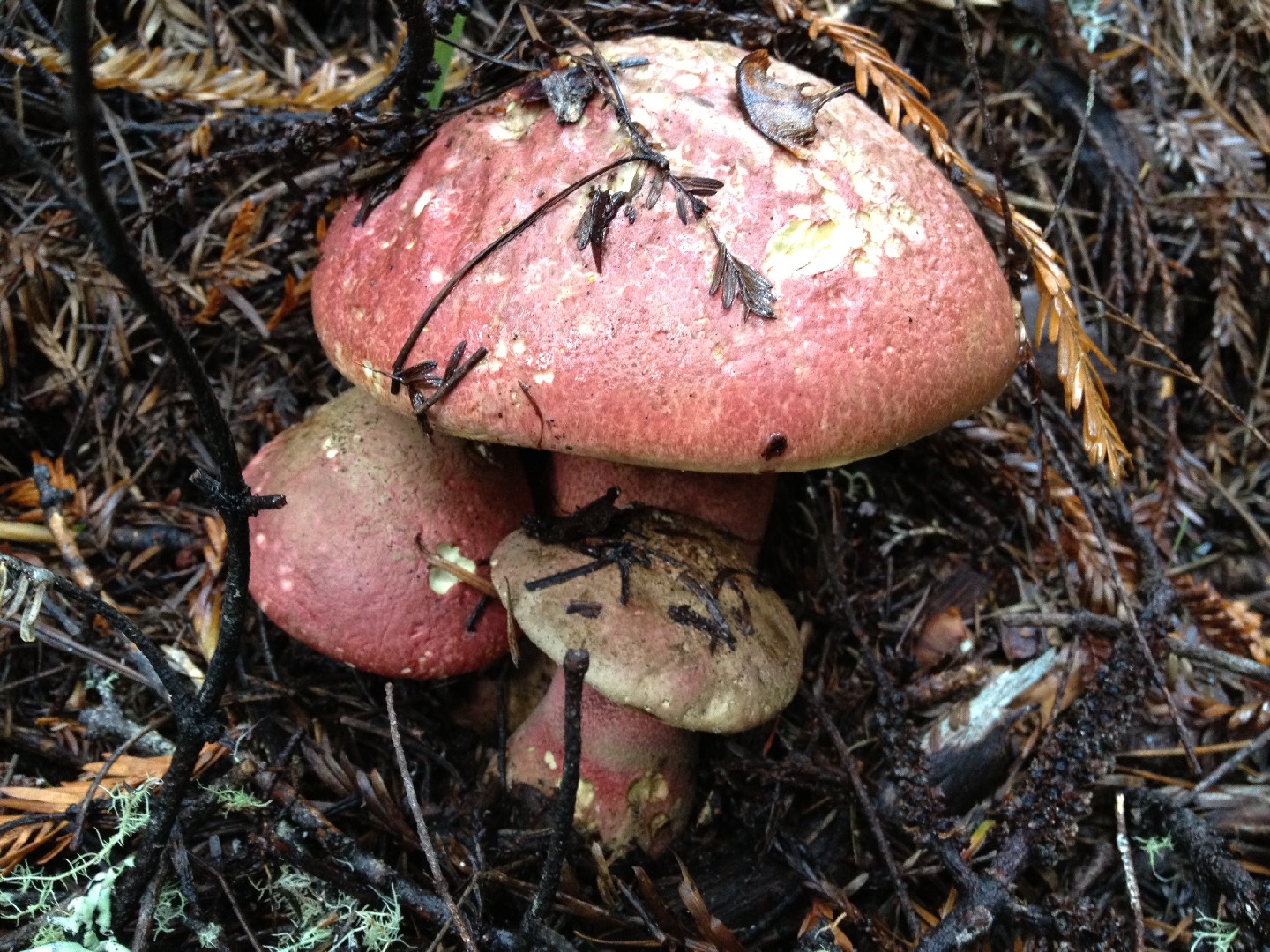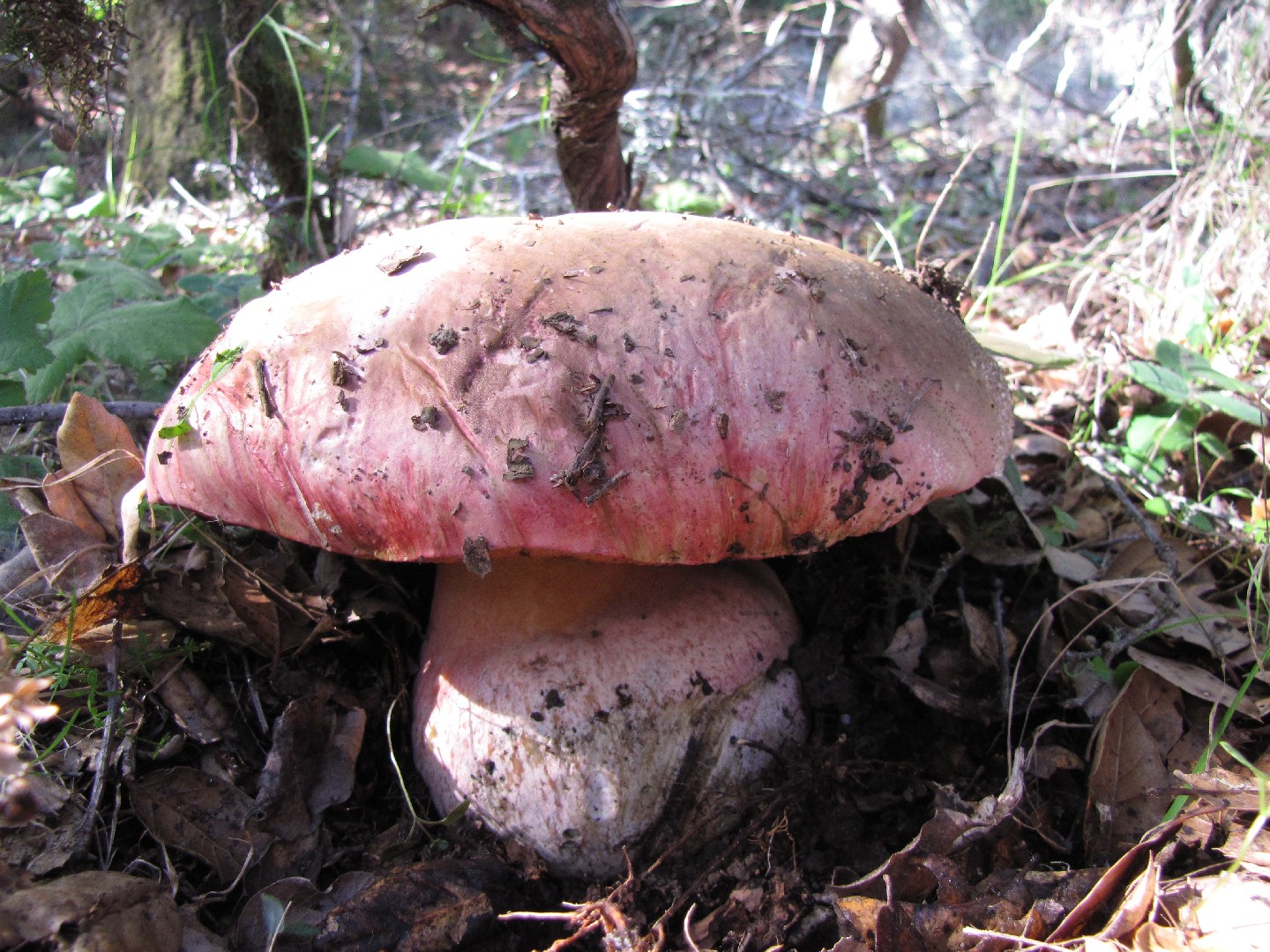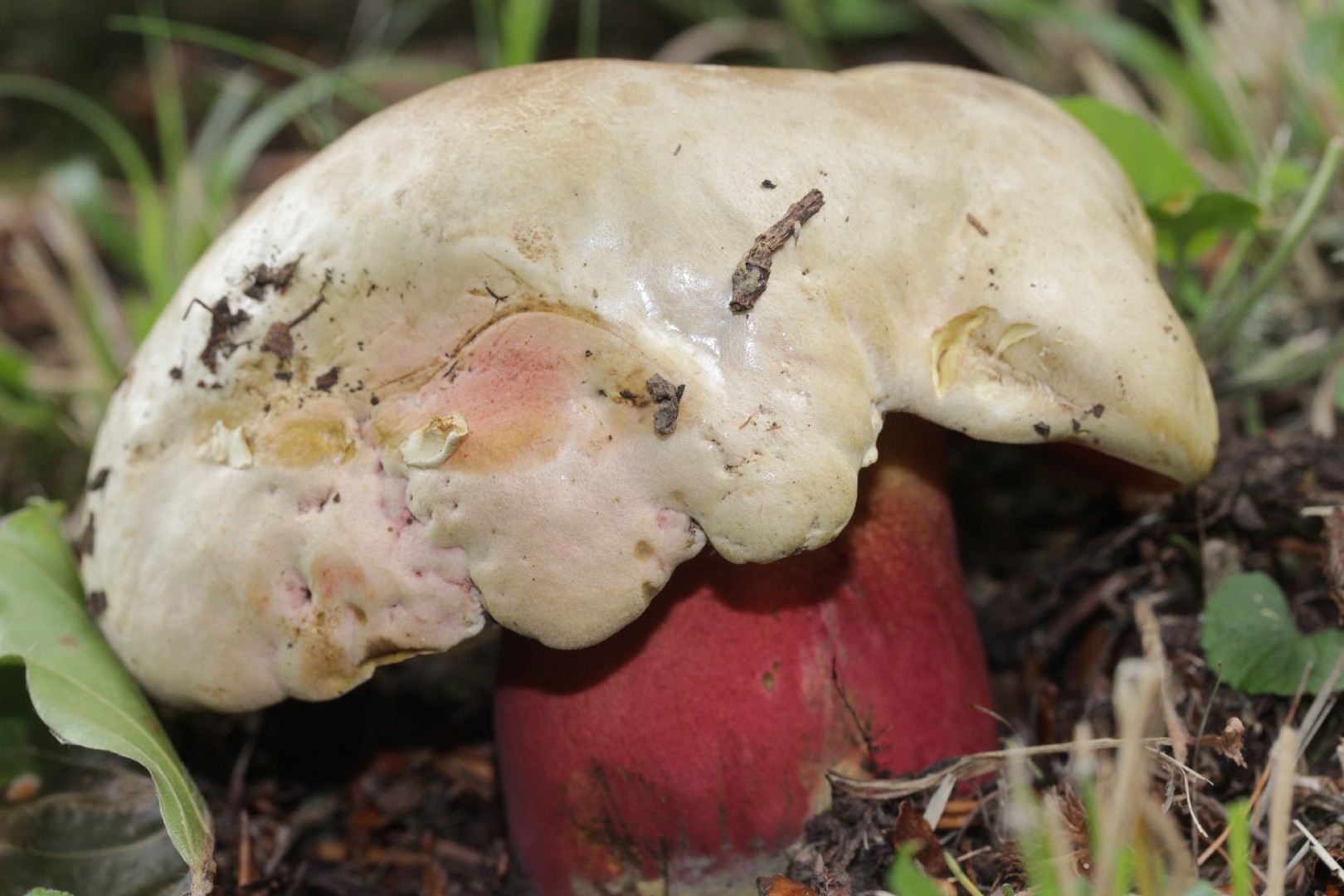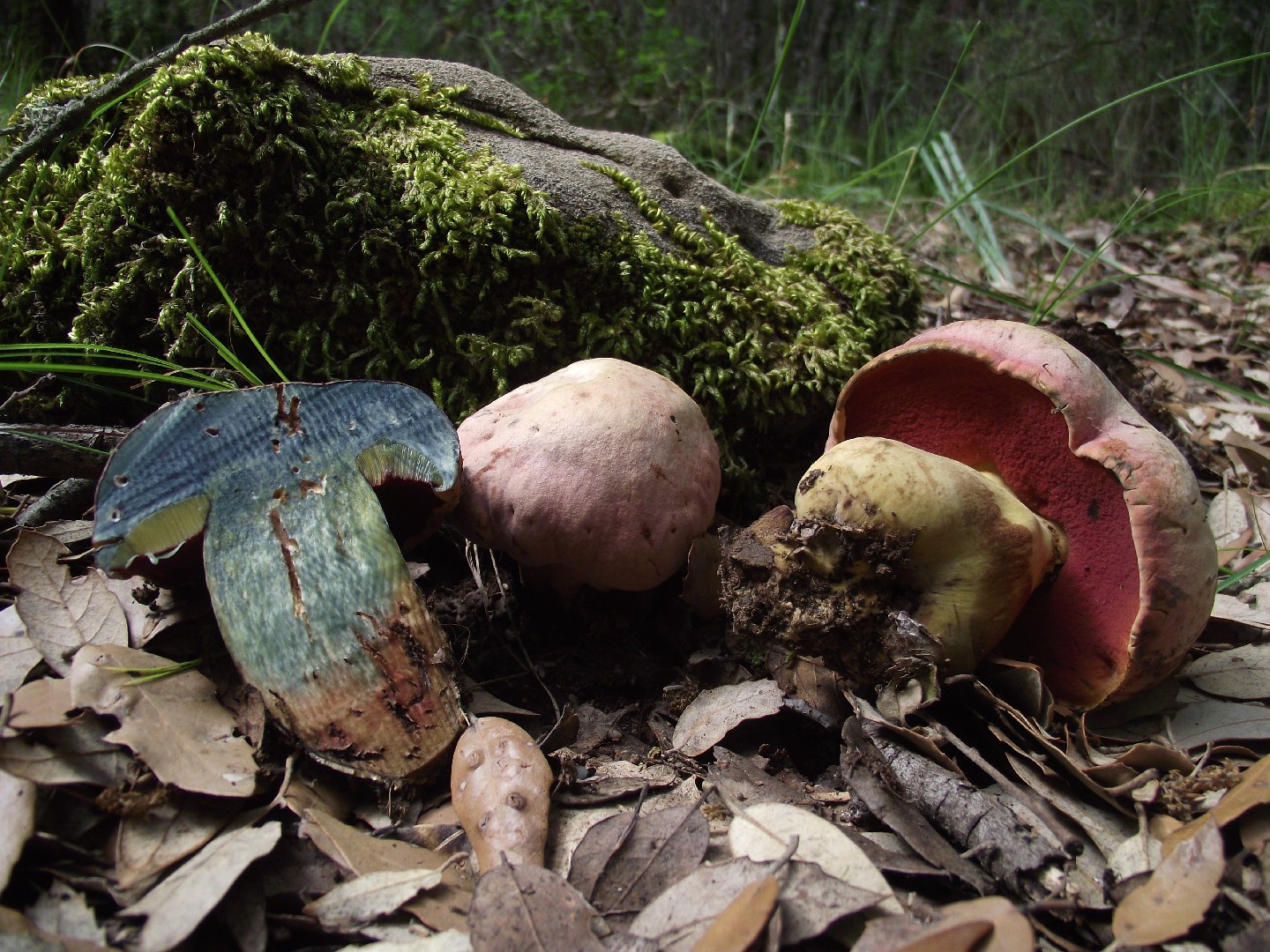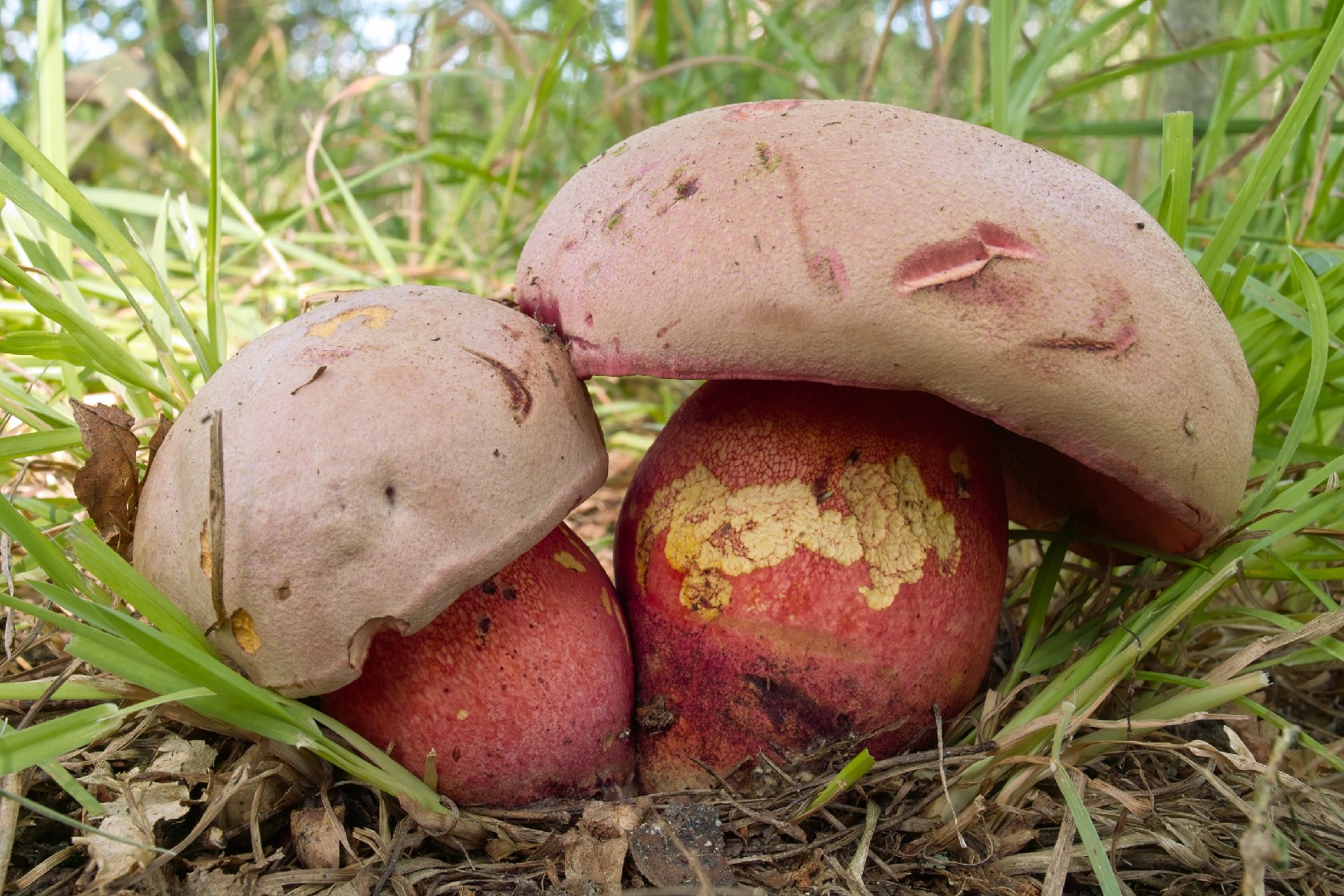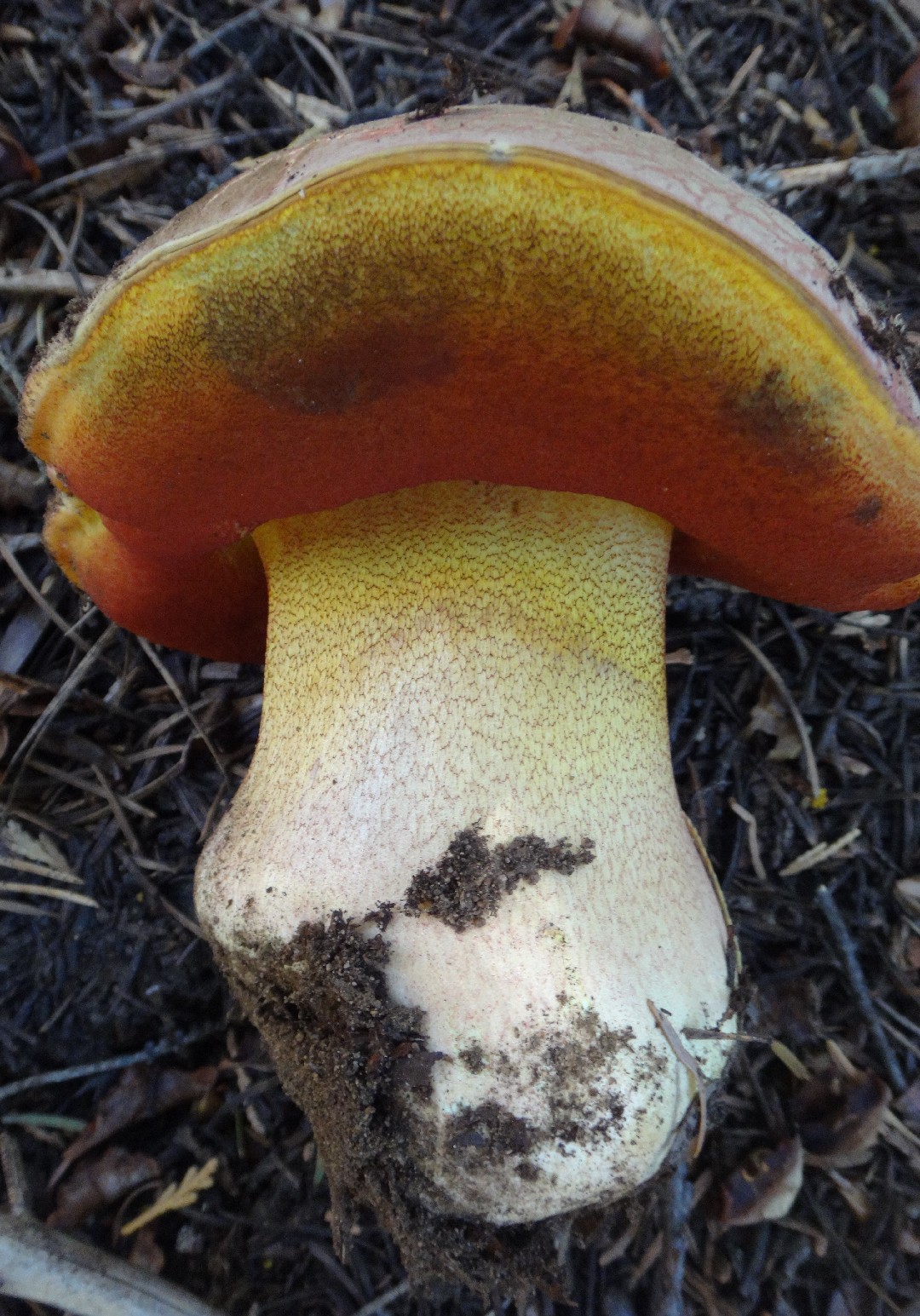Rubroboletus
Scientific name: Rubroboletus
Rubroboletus
Scientific name: Rubroboletus
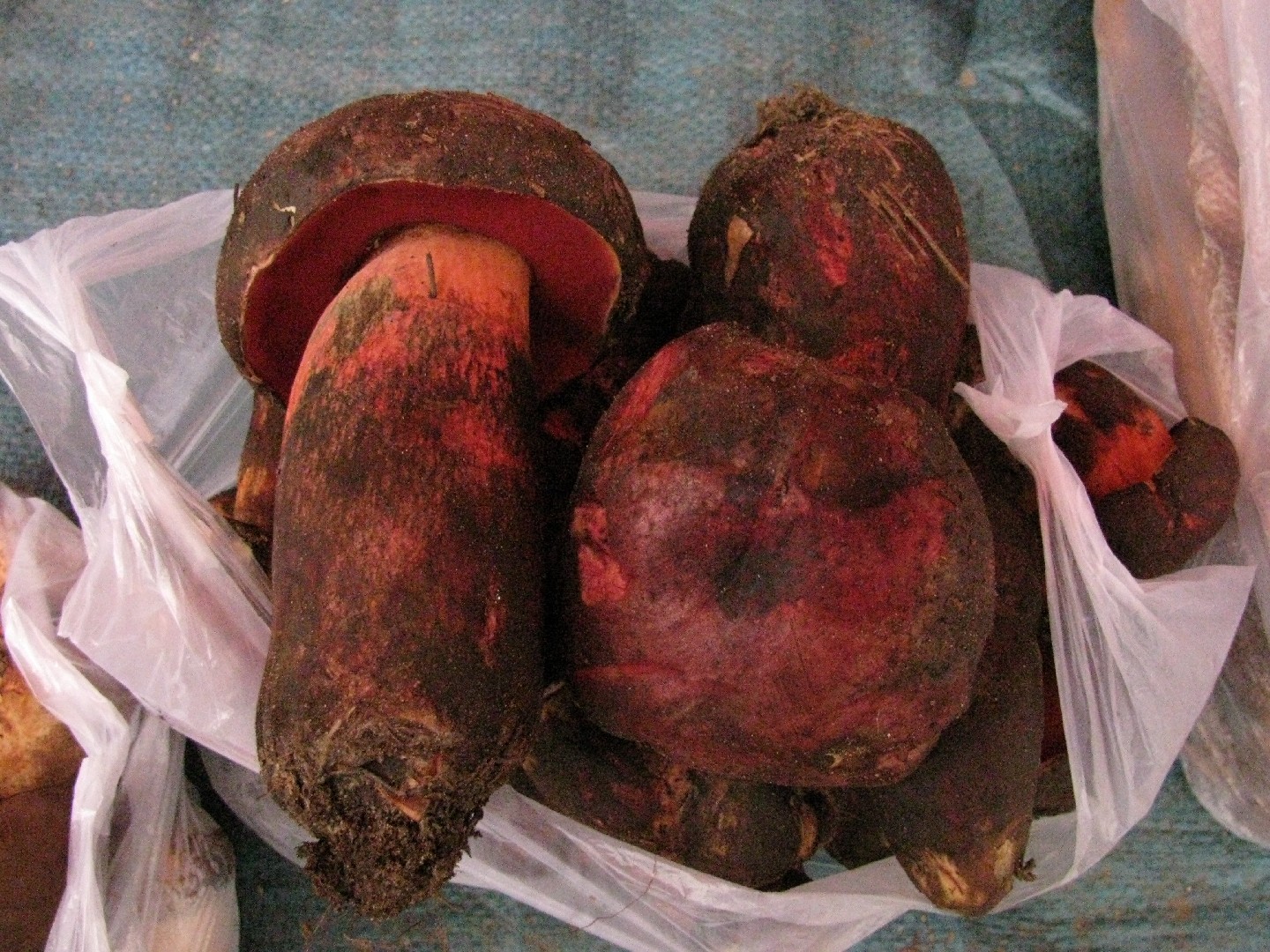 Photo By Ryane Snow (snowman) , used under CC-BY-SA-3.0 /Cropped and compressed from original
Photo By Ryane Snow (snowman) , used under CC-BY-SA-3.0 /Cropped and compressed from original Description
Rubroboletus are captivating fungi known for their vibrant and often strikingly red caps, which can be easily spotted in forests. They showcase a unique trait where their flesh changes color when cut or bruised, usually turning blue. This group often forms symbiotic relationships with trees, playing a crucial role in forest ecosystems by helping trees absorb nutrients more efficiently.
Species of Rubroboletus
Scientific Classification
Phylum
Club fungi Class
Mushroom-forming fungi Order
Boletes and allies Family
Boletes Genus
Rubroboletus 